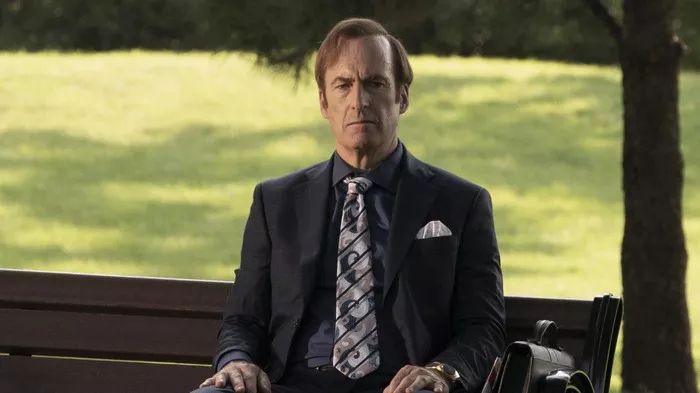Breaking Bad, the critically acclaimed television series created by Vince Gilligan, introduced audiences to a myriad of complex characters, each with their own motivations and arcs. Among them, Saul Goodman, portrayed by Bob Odenkirk, emerged as a standout figure. With his flamboyant personality, sharp wit, and morally flexible legal expertise, Saul provided much-needed comic relief amidst the dark narrative of Walter White’s descent into the criminal underworld.
As Breaking Bad unfolded over its five seasons, viewers became increasingly invested in Saul Goodman’s fate. From his introduction as a sleazy lawyer to his ultimate disappearance in the show’s prequel spinoff, Better Call Saul, Saul’s journey was one of the most intriguing subplots of the series. In this article, we delve deep into the evolution of Saul Goodman, exploring his pivotal moments, moral dilemmas, and ultimate destiny.
From Jimmy McGill to Saul Goodman
To understand Saul Goodman’s trajectory, it’s essential to trace his origins. Before he became Saul Goodman, he was Jimmy McGill, a struggling lawyer with a penchant for colorful schemes and a desire to prove himself in the legal world. In the prequel series Better Call Saul, creators Gilligan and Peter Gould meticulously crafted Jimmy’s transformation into Saul, providing insight into his complex character.
Throughout Better Call Saul, viewers witnessed Jimmy’s moral descent as he grappled with ethical dilemmas and the allure of easy money. Despite his flaws, Jimmy remained a sympathetic figure, driven by a desire for recognition and success. His relationship with his brother Chuck, a respected attorney, added layers to his character, showcasing his vulnerability and deep-seated insecurities.
As Jimmy McGill transitioned into Saul Goodman, the transformation was gradual yet unmistakable. With his flashy suits, catchy slogans, and shameless advertising tactics, Saul embraced his persona as the ultimate “criminal lawyer.” Despite his newfound success, glimpses of Jimmy’s humanity still shone through, hinting at the inner conflict beneath the surface.
Saul’s Role in Walter White’s Empire
In Breaking Bad, Saul Goodman emerged as a pivotal player in Walter White’s burgeoning drug empire. Introduced in Season 2, Saul quickly became Walter and Jesse Pinkman’s go-to legal counsel, navigating the murky waters of the criminal underworld with his trademark wit and resourcefulness.
One of Saul’s most memorable contributions was his involvement in establishing the infamous “Laser Tag” front for Walter’s meth operation. Through a series of clever maneuvers, Saul facilitated the purchase of the laser tag facility, providing Walter with a legitimate cover for his illegal activities. This scheme exemplified Saul’s ability to think outside the box and adapt to the ever-changing circumstances of his clients.
Throughout Breaking Bad, Saul served as more than just a legal advisor; he was also a confidant and a source of comic relief for Walter and Jesse. His colorful personality and quick quips provided a welcome contrast to the tension and violence that permeated the series. However, beneath the facade of bravado, Saul harbored his own fears and vulnerabilities, particularly when faced with the threat of retribution from dangerous adversaries.
Saul’s Moral Compass: Complicity vs. Conscience
One of the central themes of Breaking Bad is the erosion of morality in the pursuit of power and wealth. As Walter White’s crimes escalate, Saul Goodman finds himself increasingly entangled in a web of corruption and deception. While Saul often presents himself as morally flexible, willing to bend the rules for the right price, he occasionally grapples with moments of conscience that challenge his worldview.
One such moment occurs in Season 2 when Saul advises Walter to eliminate potential witnesses to their illegal activities, including Jesse’s girlfriend, Jane Margolis. Despite his pragmatic approach to the situation, Saul expresses genuine concern for the consequences of their actions, reflecting a fleeting glimpse of his moral compass amidst the chaos.
As Breaking Bad progresses, Saul’s moral ambiguity becomes more pronounced, particularly in his dealings with morally reprehensible clients such as Gustavo Fring and Hector Salamanca. While Saul remains loyal to his clients, he occasionally questions the ethical implications of his actions, raising doubts about the true extent of his complicity in their crimes.
The Disappearance of Saul Goodman
In the final season of Breaking Bad, Saul Goodman’s fate takes a dramatic turn as the walls close in on Walter White’s empire. With law enforcement closing in and his life in danger, Saul makes the decision to disappear, abandoning his identity and starting anew. This pivotal moment marks the end of Saul Goodman’s reign as the “criminal lawyer” and sets the stage for his transformation back into Jimmy McGill.
The disappearance of Saul Goodman sets the stage for the events of Better Call Saul, which explores Jimmy McGill’s journey of redemption and self-discovery. As Jimmy grapples with the consequences of his past actions, he confronts his inner demons and strives to reclaim his humanity in the face of adversity.
Conclusion
The evolution of Saul Goodman is a testament to the complexity of character development in Breaking Bad. From his origins as Jimmy McGill to his transformation into the flamboyant Saul Goodman, Bob Odenkirk’s portrayal captivated audiences and left a lasting impact on the series.
Through Saul’s moral dilemmas, comedic relief, and ultimate disappearance, Breaking Bad offered a nuanced exploration of the human condition and the consequences of unchecked ambition. As fans eagerly await the final season of Better Call Saul, the legacy of Saul Goodman continues to resonate, reminding us of the enduring power of one of television’s most unforgettable characters.
























